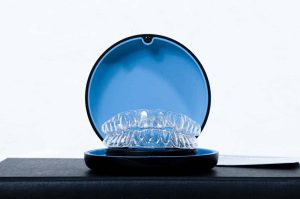
Braces vs Aligners: A Guide to Straightening Your Smile
Achieving a straight and beautiful smile is a common goal for many individuals. This blog post is essentially a guide to straightening your smile! Advancements in orthodontic technology have provided two popular options: traditional braces and clear aligners. In this comprehensive guide, we’ll explore the key differences between braces and aligners, helping you make an informed decision about which orthodontic treatment is right for you.
Understanding Braces: 
Braces have been a trusted method for straightening teeth for decades. They consist of metal brackets, wires, and sometimes rubber bands. The braces apply consistent pressure on the teeth, gradually moving them into the desired position. While traditional braces are highly effective, they come with some noticeable drawbacks, including visibility and maintenance challenges.
The Benefits of Braces:
Effectiveness: Traditional braces are known for their effectiveness in correcting a wide range of dental issues, including severe misalignments and complex cases.
Affordability: In some cases, traditional braces may be more cost-effective than alternative treatments, making them accessible to a broader range of patients.
Customization: Orthodontists can tailor traditional braces to address specific dental issues, providing a personalized treatment plan for each patient.
Understanding Aligners:

Clear aligners, such as Invisalign, have gained popularity for their discreet and removable nature. They are custom-made plastic trays that fit snugly over the teeth, gradually shifting them into the desired position. Aligners are often preferred by those who seek a more aesthetically pleasing and flexible orthodontic solution.
The Benefits of Aligners:
Invisibility: One of the primary advantages of clear aligners is their nearly invisible appearance, making them an attractive option for those who want a more discreet treatment.
Removability: Clear aligners can be easily removed for eating, brushing, and special occasions. This allows for greater flexibility in daily life.
Comfort: Aligners are generally more comfortable than traditional braces, as they lack the metal wires and brackets that can cause irritation.
Choosing Between Braces and Aligners:
There are a number of things to consider when deciding between aligners and braces. Some of these include:
Severity of the Dental Issue: Your orthodontist can help you decode based on partially on the complexity of your orthodontic needs. While both braces and aligners can address various concerns, the severity of the misalignment may influence the recommended treatment.
Aesthetics: If the visibility of orthodontic treatment is a concern, clear aligners may be the preferred option due to their discreet appearance.
Lifestyle and Maintenance: Assess your lifestyle and commitment to maintenance. Clear aligners offer the advantage of easy removal, while traditional braces require more attention to oral hygiene and dietary restrictions.
Conclusion:
Ultimately, the decision between braces and aligners depends on individual preferences, lifestyle, and the nature of the orthodontic issue. Consulting with an experienced orthodontist is crucial to determining the most suitable treatment plan for achieving a straight and confident smile. Whether you opt for the time-tested method of braces or the discreet convenience of aligners, both options offer effective solutions for transforming your dental alignment. Hopefully this guide to straightening your smile helped you understand your options. Schedule an appointment with our orthodontist, Dr. Liss, to further understand what would be the best option for your ideal smile.

